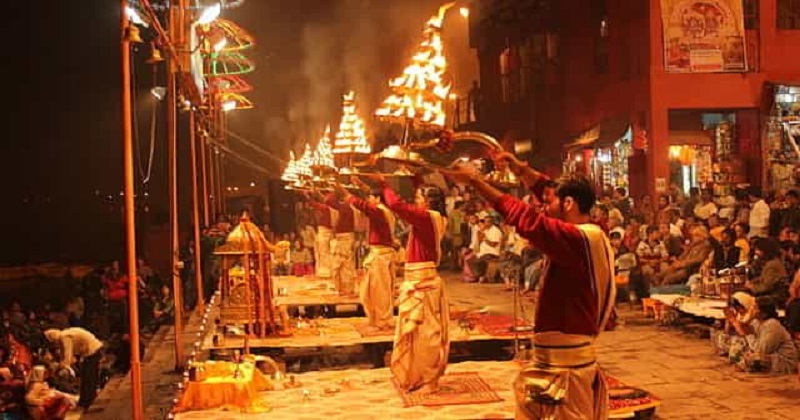
Muslims in India have historically unleashed their rage on Hindus anytime they have lost importance – social, political, or economic — and whenever their self-image as once-rulers of India has deteriorated in any way. The most recent anti-Hindu violence in Delhi’s Jahangirpuri was merely another occurrence in this historical continuity, part of a pattern of concerted action by the Muslim community in response to a perceived loss of ‘historical superiority.’
While it is apparent that the Muslim community is feeling the heat of a rising Hindu consciousness that perceives itself as the legatee of thousands of years of civilizational existence, the Muslim answer has been fundamental as usual. When presented with a Hindu threat, they have always gone ape.
To put it another way, if the Muslim community saw (the important word here is perceived) a Hindu consolidation or even the distant foundations of a communitarian collective rising from among the Hindus, they felt apprehensive, frightened, and disturbed. The unease among a large section of the Muslim Ummah, which has been quite visible and public since 2014 — following the rise of Narendra Modi, whose persona has consolidated the Hindu community’s imagination — is nothing new, simply a replication of Muslim responses in similar situations in the past.
While the secularism construct has fallen hollow in terms of new academic tendencies that have harped on exposing, rather than whitewashing, historical Hindu-Muslim faultlines, the groundswell of the truths of the past is now, more than ever, threatening to break apart. As a result, the persistence of anti-Hindu violence as a trope of Muslim political-cultural behavior must be addressed.
While Hindu-Muslim rivalry predates the colonial period, the British Raj did everything it could to intensify it for its own advantage; with the arrival of the Raj, Muslims were immediately degraded from once-rulers to common citizens on par with Hindus, due to the Queen’s Proclamation of 1858. Conversely, Hindus who had been subjects — their subjecthood rubbed in continually by such demeaning taxes as jaziya — became equal to their Muslim masters suddenly.
The writings of one of the community’s doyens, Syed Ahmed Khan, reveal the Muslim despair at this parity with the Hindus. Following India’s First War of Independence in 1857, Khan exonerated Muslims of any and all responsibility for the ‘rebellion’ against the British. He, on the other hand, charged the Hindus.
‘Be it known that I am not an advocate of those Mohammadans who behaved unreasonably and joined the insurrection,’ Khan stated. because it was their necessary responsibility, a duty mandated by the teachings of our faith, to identify with the Christians and advocate for their cause at that critical juncture. The Muslims were the major targets of the government’s hatred (in the aftermath of the events of 1857). ‘The Indians (Hindus) were very openly getting their revenge on the Muslims,’ Khan wrote in ‘The Causes Of The Indian Revolt,’ published in 1858.
Cut to 1931. Why 1931? Because that was the year Kanpur was engaged in one of the most remarkable Hindu-Muslim riots in Indian history. In the aftermath of Bhagat Singh’s death, Congress ostensibly called for a Kanpur bandh or countrywide hartal on March 24. Young Congressmen attempted to picket establishments, including those owned by Muslims, resulting in a flare-up when Muslims reacted to compulsion by closing their businesses.
Yes, a hartal in honor of Bhagat Singh became the focal point of Hindu-Muslim religious conflict in Kanpur. According to the Congress’ own official inquiry committee, which examined the riots, Muslims were uneasy at the conclusion of the Civil Disobedience Movement since its perceived success with the British Raj was viewed as a Hindu win. Because the Hindus had won, the Muslim community began organizing Tanzeem. The Tanzeem movement ‘obviously aimed to organize the Mohammadans in opposition to the Congress movement as a Hindu organization,’ says JF Sale, then district magistrate of Kanpur, in the official investigation report.
According to Daya Ram Nigam, a Kanpur native who testified before the British investigation commission on rioting, ‘the Tanzeemites had more of the aspect of a regular army of troops than of servants of religion or of people… it had a distinctively political flavor and was avowedly anti-Hindu’. As a result of this Muslim fear of Hindu ascendancy under the cover of a relatively explicitly secular Congress leadership, communitarian conflict erupted, killing 300 people officially and over 500 informally. The Direct Action Day, which created havoc in eastern India, particularly Bengal, was yet another illustration of how the Muslim community should react anytime it loses its supremacy over Hindus, whenever it believes it is losing the match.
Cut to present. The Muslim electorate has ceased to be a political force since 2014. The BJP’s political equation, with Prime Minister Narendra Modi at the helm, has stripped all political relevance from what was once the king-making electorate. The current Uttar Pradesh election, which was a step ahead of the previous one, shows that Muslim vote-bank politics is a non-starter.
The thrashing of such parties that sought the Muslim vote as a bank has had a more significant effect on the overall political importance of this group. So what began with the repeal of Articles 370 and 35A, the strike on triple talaq, and the convergence on hijab, halal, and loudspeakers atop mosques culminated on Hanuman Jayanti in Delhi’s Jahangirpuri.

Post Your Comments